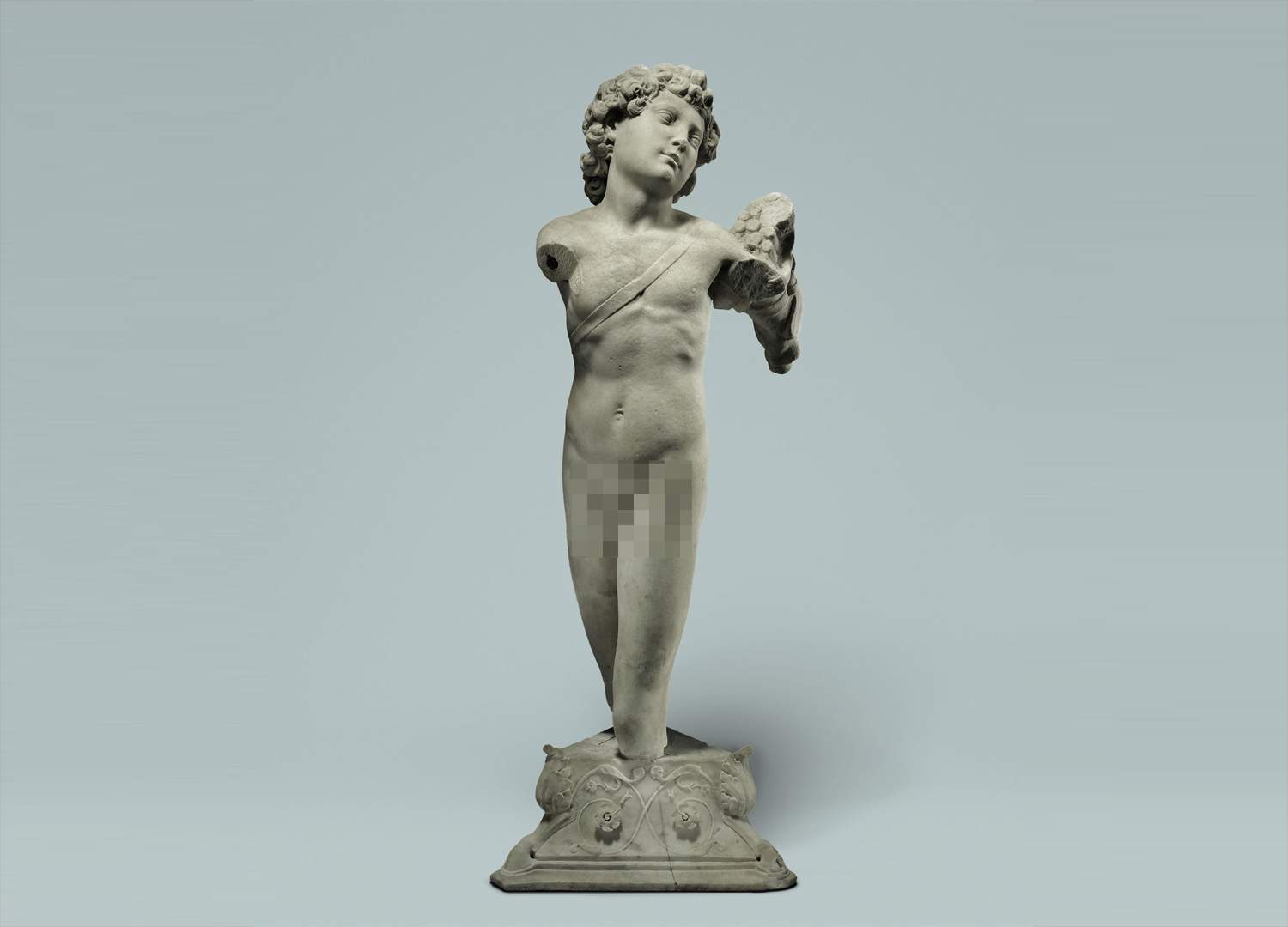Facebook mistakes Michelangelo sculpture for porn, censors for Finestre Sull'Arte
Facebook again triggers censorship ofancient art, despite “Community Standards” explicitly allowing nudity for paintings and sculptures. This time to come under the censor algorithm’s axe was the Cupid attributed to Michelangelo and housed at the Metropolitan Museum in New York, censored because it is nude: the image of the work, which is currently on display at the exhibition The Body and the Soul, from Donatello to Michelangelo, where the attribution to Michelangelo formulated by Kathleen Weil-Garris Brandt is accepted, was contained precisely in an illustrative video of the exhibition, posted by the Facebook page of Finestre Sull’Arte. The video showed the work alongside Marc Bormand, curator of the exhibition along with Beatrice Paolozzi Strozzi and Francesca Tasso, illustrating Michelangelo’s sculpture.
The incident dates back to August 31, when the page’s administrators received a message from Facebook: the nude Cupid was in fact removed for “violation of standards on nudity or sexual acts.” In short: a Renaissance sculpture mistaken for porn by Facebook’s algorithm. Yet, Facebook’s standards allow such content: in fact, the community standards state that in addition to some exceptions on the publication of images of intimate parts of the human body, “the publication of photographs of paintings, sculptures or other art forms depicting nude figures is also permitted.”
This is the latest in a series of similar cases that continue to affect institutions and individuals involved in cultural information as well as promotion and enhancement and all art-related activities. Only a few days ago, the U.S. social blacked out the page of Florence Biennale, this year entirely dedicated to the theme of femininity in art, for having published a work by Spanish artist Gloria Marco Munuera depicting a naked breast from which a drop of milk was flowing: a work on the theme of femininity, again mistaken by Facebook for an erotic image. And for Florence Biennale, this is a significant damage.
Finestre Sull’Arte immediately got in touch with Facebook’s assistance reserved for businesses, and although the Italian operators who provide support to advertisers have admitted that it is an algorithm error, for more than twenty days the message has been appearing warning the page of the violation of the rules, and no one so far has done anything to remedy the algorithm’s glaring oversight. A warning that has consequences because it results in penalties for the page, since some features, such as the ability to advertise, have been heavily restricted, and the distribution of posts has been greatly reduced: it means that many fewer users see and share Finestre Sull’Arte posts. And no one has fixed the problem yet, despite almost daily reports, indeed: it seems that no human being can remedy the algorithm problem, nor has our masthead been given recourse. These are truly annoying consequences of a software error. And to make matters worse, in an ironic twist of fate, on Facebook’s policy page, where examples of what is permissible to post and what is not, among the permissible images is... Michelangelo’s David. A circumstance that also makes the case surreal.
The hope is that, given the fact that this problem has been raging for years and as the list of affected subjects grows longer, institutions can establish a dialogue with Facebook so that the social to take action to fix its algorithm so that it no longer affects recognized subjects involved in art and culture, or to create a selection of authoritative subjects that may have the benefit of not being subjected to the algorithm’s prior censorship (a mechanism, moreover, that already exists for some situations identified by Facebook), but of being checked by human operators following any user reports. Otherwise, if art continues to be censored, it may not be long before, perhaps in the goal of respecting everyone’s confessions, religious works depicting Christs, saints and Madonnas are also censored.
 |
| Facebook mistakes Michelangelo sculpture for porn, censors for Finestre Sull'Arte |
Warning: the translation into English of the original Italian article was created using automatic tools. We undertake to review all articles, but we do not guarantee the total absence of inaccuracies in the translation due to the program. You can find the original by clicking on the ITA button. If you find any mistake,please contact us.




























